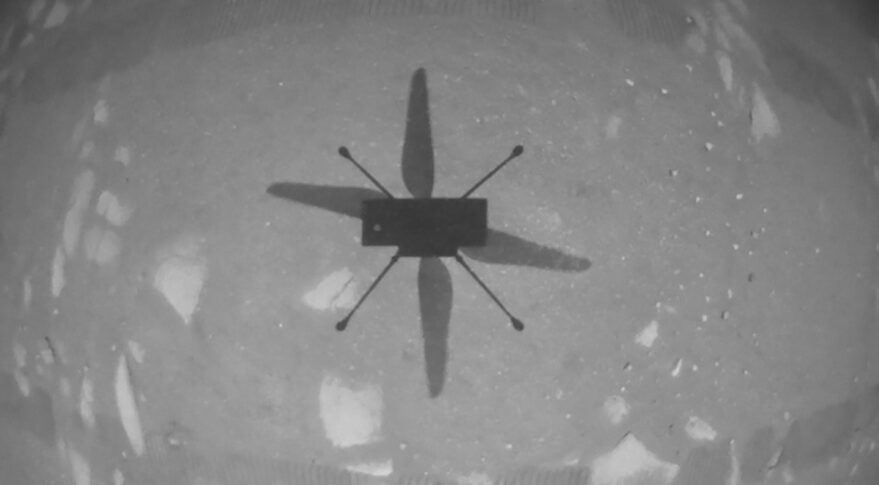Ingenuity performs first flight on Marsby Jeff Foust — April 19, 2021 [SN]
 An image taken by NASA's Ingenuity Mars helicopter during its first flight April 19, looking down at the surface and its shadow. Credit: NASA/JPL-Caltech
An image taken by NASA's Ingenuity Mars helicopter during its first flight April 19, looking down at the surface and its shadow. Credit: NASA/JPL-CaltechWASHINGTON — NASA’s Ingenuity helicopter successfully performed the first powered flight on another planet April 19, briefing hovering above the surface of Mars.
The 1.8-kilogram helicopter performed the flight at 3:34 a.m. Eastern, but data from the flight, relayed through the Perseverance rover and another Mars orbiter, arrived at Earth a little more than three hours later.
Source:
https://spacenews.com/ingenuity-performs-first-flight-on-mars/